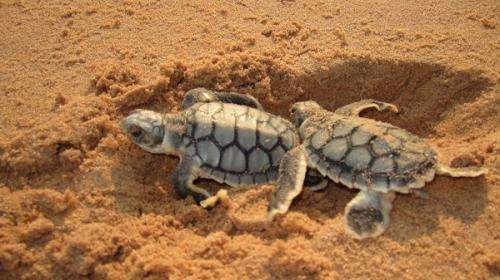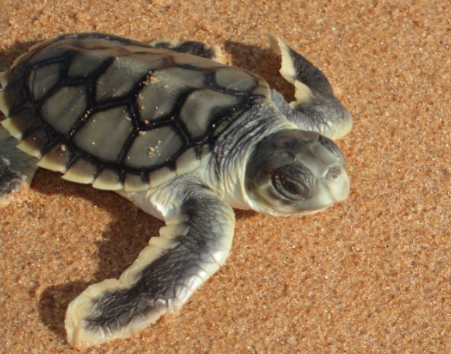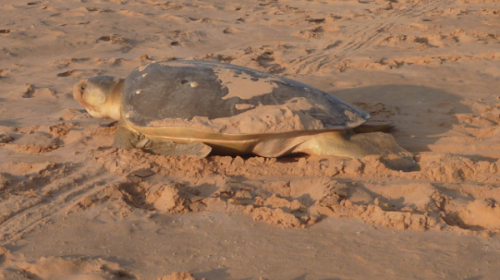Turtle populations benefit from cooler rookery

A UWA scientist says cooler winters at Cape Domett, in the mouth of the Kimberley's Cambridge Gulf, may be good long-term news for flatback turtles (Natator depressus).
Herpetologist Jessica Stubbs says a turtle embryo's sex is influenced by sand temperatures as its egg incubates, and the Cape Domett population may help balance sex ratios.
She says climate change is driving beach sand temperatures up, leading to more female turtles emerging from summer nesting grounds like Broome's Cable Beach and Hedland's Cemetery Beach.
However, Cape Domett is a winter rookery, where she says cooler winters have led to cooler beach sands and more males hatching.
Ms Stubbs says the turtle's ability to swim many thousands of kilometres could remedy this gender imbalance because males from Cape Domett are able to mate with increasing female populations from other beaches.
Temperature is known to determine all reptile embryo's sex between the middle-half and middle-third of their development.
In a series of experiments Ms Stubbs refined what is known about sand-temperature's influence on flatback turtle sex ratios.
"We collected eggs at Cape Domett and brought them back to UWA to incubate them in back-switch experiments," she says.
"You incubate the eggs at either a male-producing or a female-producing temperature.

"At a certain point you switch them on to the opposite temperature for a certain proportion of time and then you switch them back again."
She says the thermo-sensitive period that determines an embryo's gender lies between 43 per cent and 66 per cent of its incubation period before hatching.
"If the sex of the hatchling is the sex of the predominant temperature then you know that the time you switched it for wasn't during the sensitive period," she says.
They determined 29.4 degrees Celsius was pivotal for producing equal sex ratios while conditions below 27.7 degrees produced males and embryos became female above 31.1 degrees.
The researchers also produced a predictive model for hatchling sex ratios based on 23 years of historical climate data.

When collecting eggs they placed temperature loggers in the sand to monitor conditions during the embryo development period.
"We used that to validate our model of sand temperatures," she says.
"We also set up a weather station to record things like air temperature and humidity.
"We don't actually know if the cooler trend is going to continue or if it's going to get like other rookeries and end up becoming warmer."
More information: Stubbs et al. Climate Change Responses 2014
Provided by Science Network WA




















